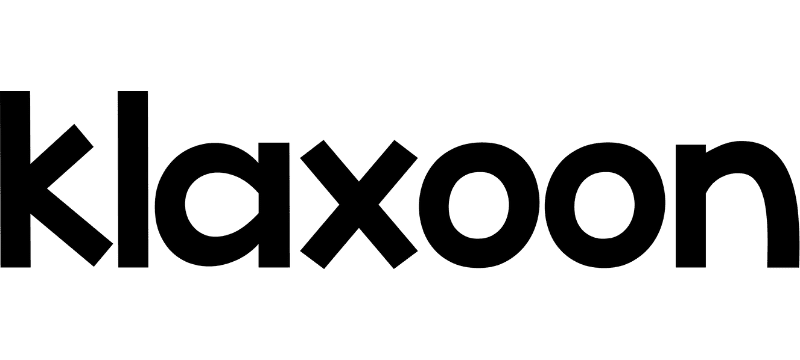Engaging your teams in the new space-time dimension of hybrid work
Understand how to drive connection, participation, and engagement in an increasingly hybrid or asynchronous work landscape.
Discover what tools exist to drive the above behaviors.
Get to know how to foster a culture and work environment that drives innovation, creativity, and new ideas.



With talent now able to work from anywhere – on-site, on-the-go, from home, and sometimes asynchronously – it’s incumbent on HR to reshape and connect newly hybrid teams in order to boost participation, productivity, and team engagement.
To understand how to do so, Jon Kennard, Editorial content manager at UNLEASH is joined by Pollyanna Rousseau, Go-to-Market Director at Klaxoon, and Alexandre Kelagopian, Leader at onepoint as they discuss how hybrid affects the experience of work, why hybrid is a policy choice with very real implications for day-to-day operations, and why this means HR has to dramatically reimagine everything from meetings, to job advertisements, to how communication occurs.
Watch on-demand to:
- Hear about how hybrid work is truly reshaping the experience of work.
- Follow a step-by-step approach to creating a hybrid policy and framework that is attuned to your organization.
- Understand how hybrid cannot just be about macrostructure; it must change small details and day-to-day practices too.
Hybrid work is more of an approach. It should [involve] designing work for the worker, wherever they are.
Pollyanna Rousseau, Go-to-Market Director, Klaxoon
The real impact of hybrid and remote work
By now, most in HR know that hybrid and remote work comes with as many pros and cons as regimented, centralized working did. For many workers, hybrid freed up costs and time as they no longer have to commute so regularly; for others, they’ve found it isolating and frustrating, as they struggle to connect with colleagues who are no longer in the same location. Of course, this reshapes and affects culture; and if this cultural reconfiguration doesn’t happen in the right way, employees are more prepared to quit than ever before.
Therefore, HR is going to have to get to grips with curating an experience of hybrid work that, well, truly works as its what employees want. According to Indeed report stats, 83% of employees want to work in a remote or hybrid arrangement whilst being able to work from home or anywhere was the 3rd most-cited reason for leaving a job.
Managing hyrbid
For Rousseau, it is clear what is needed for hybrid work to be successful. She explained that it requires an organizational mindset shift from ‘where’ to ‘when’ when it comes to work, with mindfulness around the concept and processes of work. And, in order to ensure workforce engagement and participation remains high, she added that the right kind of eco-systems needs to be built around hybrid workers. Broadly, to understand if any new hybrid approaches, systems, and processes are working, HR will also need to get the right metrics alongside it, measuring things such as engagement, disengagement, and levels of discretionary effort.
With engagement, perhaps obvious to many HR practitioners, being a desirable hybrid outcome – in no way is this different from pre-pandemic times when hybrid work was less common – people teams, argued Kelagopian, need to remind themselves of what kind of tasks and functions they need to focus on and reshape for hybrid work. Here, a renewed focus on lots of facets that HR knows drive good work outcomes regardless of whether work is in-office, hybrid, or remote is key. Therefore, concentrating on how to drive effective communication, personalization, buy-in, feedback, growth opportunity, reward, and better leadership will, as usual, be crucial.
How can HR set up hybrid to be successful?
As Kelagopian described in the webinar, HR obviously has a key role to play in hybrid work being successful. Hybrid work, in many ways, is a policy, and therefore HR has a role in designing the policy, implementing it, and ensuring the general definition of hybrid work makes sense to the organization they are operating in. There are some good examples of this. In the webinar, Airbnb was discussed, they have a very liberal, work-from-anywhere approach, which works for them. This was contrasted against companies whose culture would not support this, as they’re just not ready for that level of freedom. Policy, therefore, needs to reflect culture.
Additionally, as noted by Kelagopian, the first step toward hybrid success should involve making a framework that makes sense for the organization. Then it should be about ensuring that no discrepancies exist in the framework, so it is fair. Then, all tools and processes should be fitted to this framework, so they support hybrid; everything from making the right kind of spaces, to the right digital applications, to the right culture. To support this, the ethos of intentionality, collaboration, inclusivity, and asynchronicity should become more center stage in informing a move to new systems and structures.
Leaving synchronous work behind
Hybrid isn’t just about in office or out of office. Pre-pandemic, much more work happened synchronously i.e. employees completed tasks largely at the same time or recurring in the same periods. Often, this was in the same space, too. However, now the synchronous working is increasing balanced with asynchronous working. Firms like Dropbox, GitLab, and Expensify employ this model.
The question arising from this is: how can HR ensure good work outcomes conclude from asynchronous work models? Here, Rousseau suggested a focus on ensuring short but live team catchups can help, as can structured interactions, persistence in communication, improvements in communication style, and in-company news feeds. In her view, these ideas can filter down into day-to-day practices and are manipulated to become better for hybrid or asynchronous work, such as making meetings more solution-focussed, listening-centric, and more focused, and creating adjacent spaces where asynchronous colleagues can catch up.
In this way, webinar speakers suggested, hybrid becomes less about binary choices about where work takes place and more about holistic policy creating that underpins great work outcomes.
